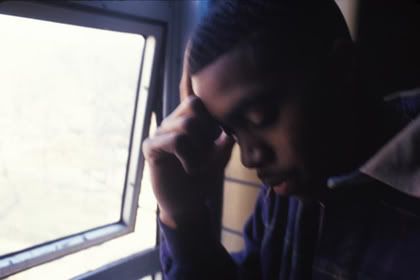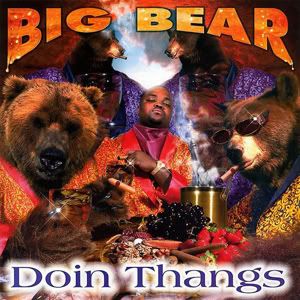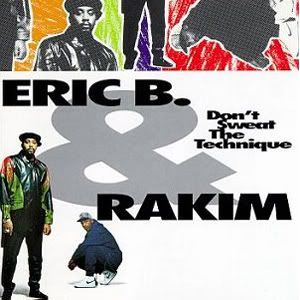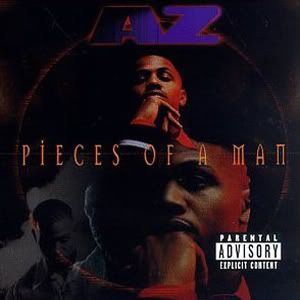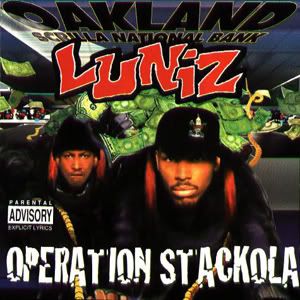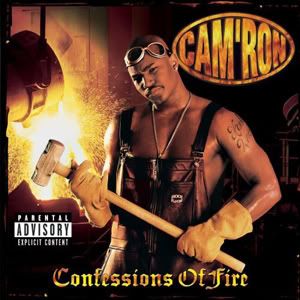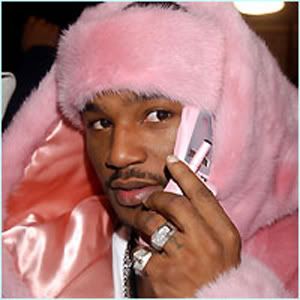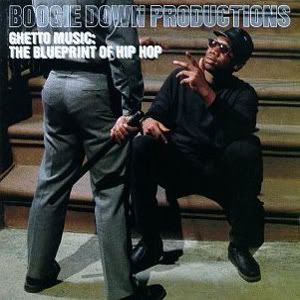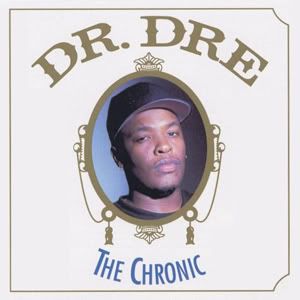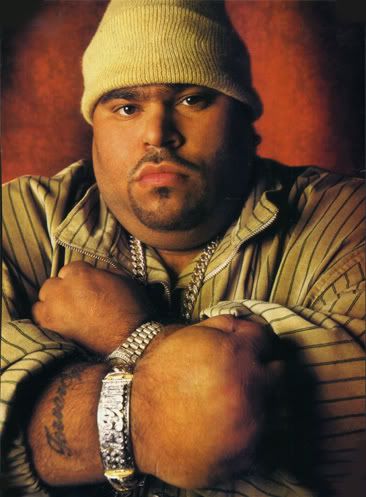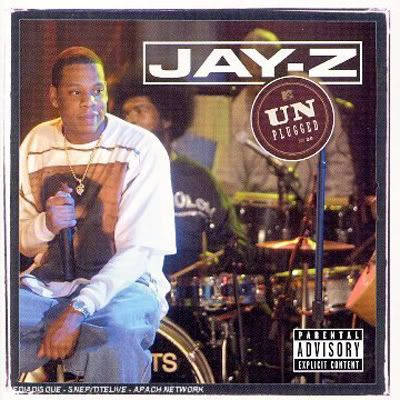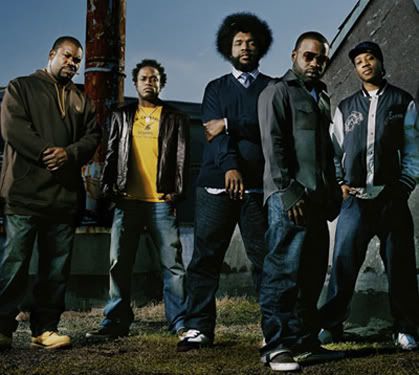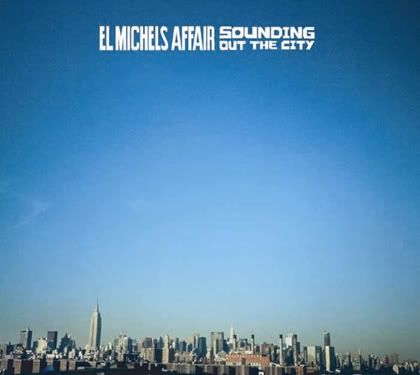
Biggie Smalls is the illest. Unbelievable how much time has passed since the tragic news hit the streets. Where were you when you heard it? Did you believe it at the time? Now that it's a shocking ten years later, ask yourself: do you believe there will ever be a time in your life that you will hear the late-breaking news of the world finding out who was part of the conspiracy to assassinate Christopher Latore Wallace aka The Notorious B.I.G.? Chris Rock can joke all he wants, but if you care to research the details of the murder of Biggie Smalls, it was much, much deeper than what meets the eye. It was a highly organized hit and not retaliation from some fraudulent East Coast-West Coast war. What’s beef? Beef is when street enemies also work as police. Beef is when there’s no justice, no peace, causing mothers grief. Beef is when lies kill truth, guaranteed to ruin the minds of youth.
Check out the bizarre.
There is always life after death. It goes: dead, then injured. Often for the injured survivors, the damage is permanent. It sure is this time. An entire culture and all close friends aside, his family still has no closure to the hole in their hearts. Biggie is survived by two children – a daughter, T’Yanna, and Christopher Jr., a son – and of course, his mother. Biggie was her only child. Her struggle is that much heavier with no other children to help her though the wake of such an enormous loss. Certain little facts get forgotten along the way to the future as rap’s past dissolves faster and faster. To those still paying attention, Voletta Wallace is continuing the David vs. Goliath fight of her life against the City of Los Angeles and the LAPD for concealing evidence that their officers were involved in the death of her beloved son. There has already been a mistrial from an officer concealing evidence from the case, crucial evidence with testimony from certain individuals revealing potential names of people suspected of being responsible for pulling the trigger on Biggie after the Soul Train Awards on March 9th, 1997.
Find your last bit of hope. Imagine. What if there were suspects arrested tomorrow? What if there was an official trial, with a judge and a jury? Most importantly: what if there was a guilty verdict? What if there was no out of court settlement accepted, no mistrial, no escape on a technicality? If the names of the masterminds behind one of hip-hop’s most damaging crimes and one of its most heartbreaking unsolved mysteries were found, what then? Could they ever receive a fair trial? Would they ever be sent to prison? And what would happen to the police department that was possibly complicit in the crime? Would there be riots in the streets? Considering the history of Los Angeles and Rodney King, William Cardenas, Juan Saldaña, John Jordan, 16-year-old Julio Castillo, Stanley Miller, and surely countless other unnamed and unknown victims of the silent but violent history of police brutality in the City of Angels, this is not entirely unimaginable. Hell, it might be the most righteous reaction to a social institution like the LAPD, whose mandate is allegedly “to protect and serve.”
"A deliberate concealment of information" is how Judge Florence-Marie Cooper described the illegal actions of Detective Steven Katz. For six years, Katz was the lead investigator of the Biggie Smalls murder case. For six years, Katz bumbled strong leads and refused to question obvious suspects. Such incompetence culminated after he had interviewed Kenny Boagni, a police informant, yet when it came time to present the crucial testimony, he told the judge he had “forgotten it in a desk drawer.” Following a verdict of mistrial, in which the LAPD was found guilty of withholding evidence to the plaintiff’s case and basically breaking the law to protect the privacy of the police force, Shaheem Reid of MTV quoted Ms. Wallace’s lead attorney, Perry Sanders: "Little did we suspect so many lies [would] be told under the penalty of perjury." Sanders pleaded with anyone with information on Biggie's 1997 murder or corruption in the Los Angeles Police Department to get in touch with him and help make the badge-wearing criminals responsible to a level of truth and justice. “This [case] sends a message you cannot trust the police." He also stated that the whole department is not corrupt, but clarified that a few crooked officers "give good cops bad names. It's time to clean house at the LAPD at the highest level."
Voletta Wallace was asked for her thoughts on the discovery that the LAPD withheld evidence that it had collected itself, therefore deeming it valuable if not vital, yet not submitting it for trial in a court of law, and she responded with a lack of surprise. What was surprising, though, was that it was a secret source within the police organization itself that told her about the corruption. Ms. Wallace, after releasing her frustrations vocally outside the courthouse, calmly stated: "I've labored with pain and sweat just to find what happened to my son."
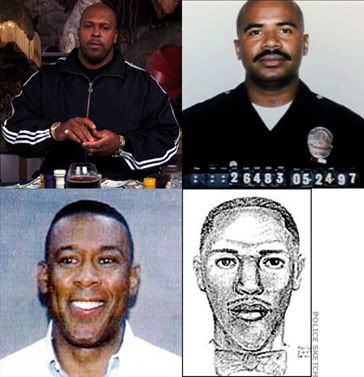 (clockwise from top left - Suge Knight, CEO of Death Row Records. David Mack, LAPD Officer. LAPD composite of murder suspect. Amir Muhammad, aka Harry Billups)
(clockwise from top left - Suge Knight, CEO of Death Row Records. David Mack, LAPD Officer. LAPD composite of murder suspect. Amir Muhammad, aka Harry Billups)While there are several notions as to what exactly took place during the planning and execution of Biggie Smalls, with the available evidence, one theory seems to be more consensually plausible than the others. In terms of the target, it’s speculated that Marion ‘Suge’ Knight ordered the death of either Biggie Smalls or Sean ‘Puffy’ Combs (aka Diddy) and asked LAPD officer David Mack, who at that point was employed by Knight’s Death Row Records for security and who also had strong ties to Compton Bloods street gangs, for assistance. Mack sought out his ex-college roommate Harry Billups, who had since changed his name to Amir Muhammad after converting to the Nation of Islam, to commit the drive-by in that legendary black Impala, and drive off into the night. A public execution outside of a high profile Soul Train Awards after-party, in a busy Los Angeles street, in front of hundreds of potential witnesses, without a police chase or video surveillance - even though the FBI admits to following Biggie Smalls in Los Angeles for up to a week before his murder. Who Shot Ya?
Eugene Deal claims to know. Deal, a former bodyguard of Puffy Combs, denounced the LAPD’s favoured allegation that Biggie was murdered by members of the Southside Compton Crips (the same gang accused of murdering Tupac Shakur) over an unpaid protection agreement. Bad Boy Records had been using Crips as security for appearances while on the west coast. However, some sources, including Reggie Wright, the head of Death Row Records security, believed that the Crips began extorting Puffy Combs to the extent where he refused to back down from their demands – and allegedly paid the price. Deal, however, maintains that the Crips showed nothing but love at the Soul Train Awards after-party and instead points the finger at a figure dressed like a “Nation of Islam guy" who "seemed to be checking [Combs] out." Deal claims that that same figure turned away and began walking north, the same direction from which the black Impala came only 10 minutes later. In an interview with documentary filmmaker Nick Broomfield, Deal was shown 6 mug shots of individuals who in some way had been suspected of being involved in the murders. He immediately pointed to the picture of Amir Muhammad and said "that's him right there." The LAPD has never shown Eugene Deal, a prime witness, a picture of Amir Muhammad.
Nor have they ever interviewed Amir Muhammad themselves. Muhammad has always proclaimed innocence, stating in the LA Times: “The fact is the police have never talked to me. And the reason they haven't is because I had nothing to do with this horrible crime. The police didn't chase this lead because they obviously realized at some point it wasn't true. ... The story made it sound like I was some mystery assassin who committed this heinous crime and then just dropped off the face of the Earth – which is the furthest thing from the truth. ... I live and work right here in the Southland area and have done so for many years. ... I can't find the words to express the injustice I feel was done to me.” Yet, for someone who so vocally maintains innocence and, furthermore, feels like he is the target of a character assassination of the highest degree, Mr. Muhammad has been unusually lenient in seeking justice or compensation for the “libel and slander” that has been connected to his name and face (the main police composite sketch of Biggie’s killer remains strikingly similar to the picture of Muhammad).
Why haven’t the LAPD ever taken him in for a single questioning? Maybe because they know that David Mack was as corrupt a police officer as they come. 8 months after Biggie’s murder, Mack was arrested and convicted for a Los Angeles bank robbery. He’s currently serving a 14 year bid and reportedly associates with also imprisoned Mob Piru Bloods, a street gang with ties to Death Row Records. A formal investigation into Mack’s dealings and any associates affiliated would surely open a black hole of dark secrets that the city would rather keep closed. Such a revelation would negatively implicate various officers across the entire department, from former Police Chief Bernard Parks, all the way down to some of the least decorated beat cops on the force. It would be worse than the RAMPART Scandal that threatened to implode the LAPD in the 1990s. How many department-wide corruption scandals can one city take? Well, how many innocent people can one group of corrupt officers murder before the people learn the facts and decide to retaliate?
During his interview with Katz, Kenny Boagni stated that he shared a cell with LAPD officer Rafael Perez, the one-time partner of David Mack. Not only were Perez and Mack partners on the police force, they were partners in crime. In February, 2000, Perez was convicted of stealing confiscated drugs and re-selling them to street dealers. Boagni confessed a long list of connections that tied together the fragments and separate events that occurred on the night of Biggie’s murder. Firstly, Boagni stated that “Mack and Perez were involved in Death Row Records, they went to all their parties and stuff.” In a November 2000 declaration to a police detective, Boagni said Perez told him he was at the award show when Biggie Smalls was killed. He also claimed that Perez called David Mack on a cell phone before the murder to say that Biggie Smalls was in his SUV. However, after figuring prominently in both LAPD and FBI investigations, Boagni suddenly recanted his testimony and claimed that his confessions were fraudulent.
Recently, the LAPD have assigned a brand new task force to investigate the murder, removing the forgetful Detective Katz and implementing a six-man team of veteran homicide officers, who are currently equipped with a new office, a new budget and a computerized tracking system to organize the “messy 72-volume ‘murder book’,” a book that possibly carries the name of the killer(s) of Biggie Smalls, but is possibly in the possession of the last people in the world that would want to reveal the killer’s name because of the potentially earth-shaking repercussions it would have on the City of Los Angeles and the LAPD. Time will tell what happened. Steps are being taken, slowly but surely, that edge closer and closer to the answer to the questions some of us have been asking since March 9, 1997: “Who killed Biggie Smalls? And why?”
Ten years have passed and we still miss Big Poppa. Crews have disbanded, labels have changed and hip-hop has grown. Biggie Smalls' music has been imitated, but nowhere near duplicated. He’s probably rolling in his grave while hearing the assessment from friendly rival Nas that “hip hop is dead.” A large part of it died March 9th, and it may never heal until we know the whole truth.
The trial of Ms. Wallace vs. The LAPD is set to resume in Summer 2007, at which point she will continue to attempt the impossible: seek the truth, receive justice and find a guilty verdict for those responsible for the corruption, negligence and viciousness that took Christopher Wallace away from us – and her – forever. Like Tupac Shakur, he will live on forever through the music. And like Tupac, he foresaw death before death saw him. After Shakur’s passing, Biggie had a conversation with well respected photographer Ernie Paniciolli regarding his former friend: “In five years, me and duke would have been doing things together. We would have been recording together, and we would be taking all the money ‘cause individually nobody [could] touch us, and together you know nobody [could] touch us.”
“It was all a dream.”
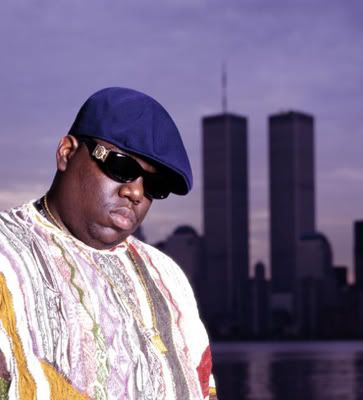 Co-written by Addi 'Mindbender' Stewart
Co-written by Addi 'Mindbender' Stewart
